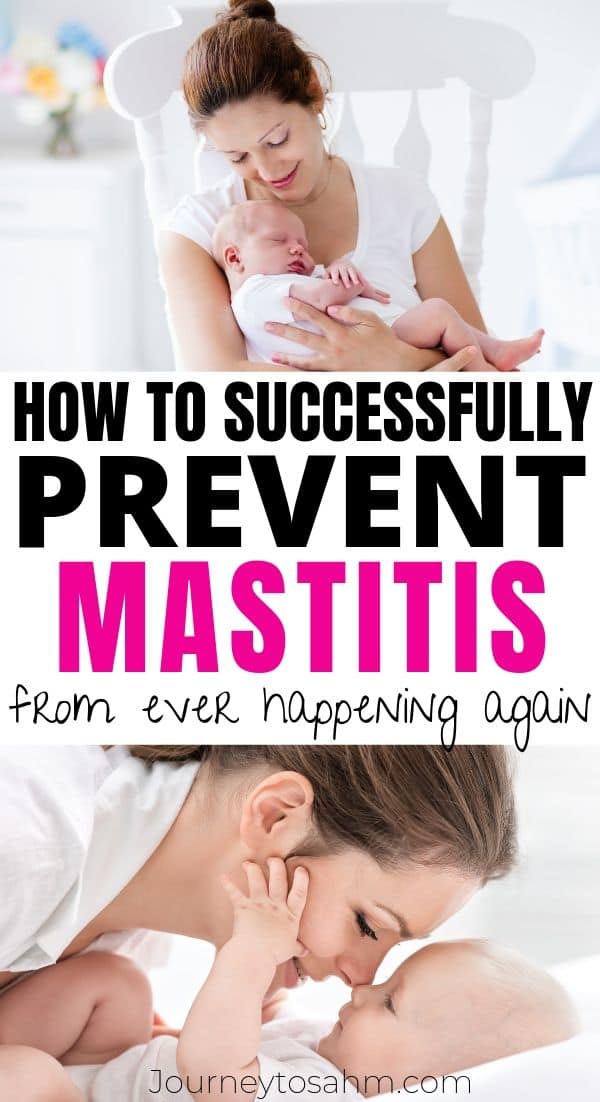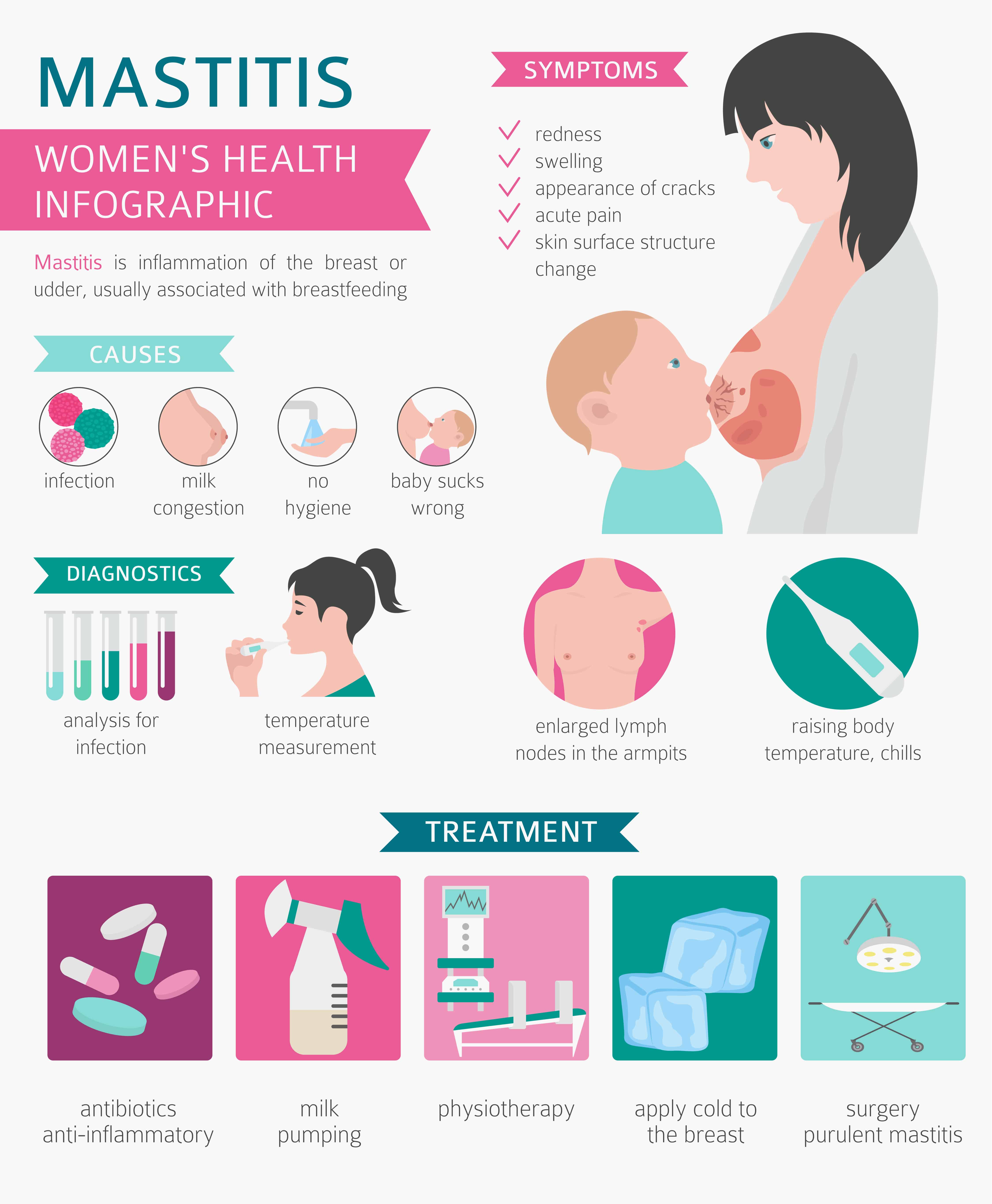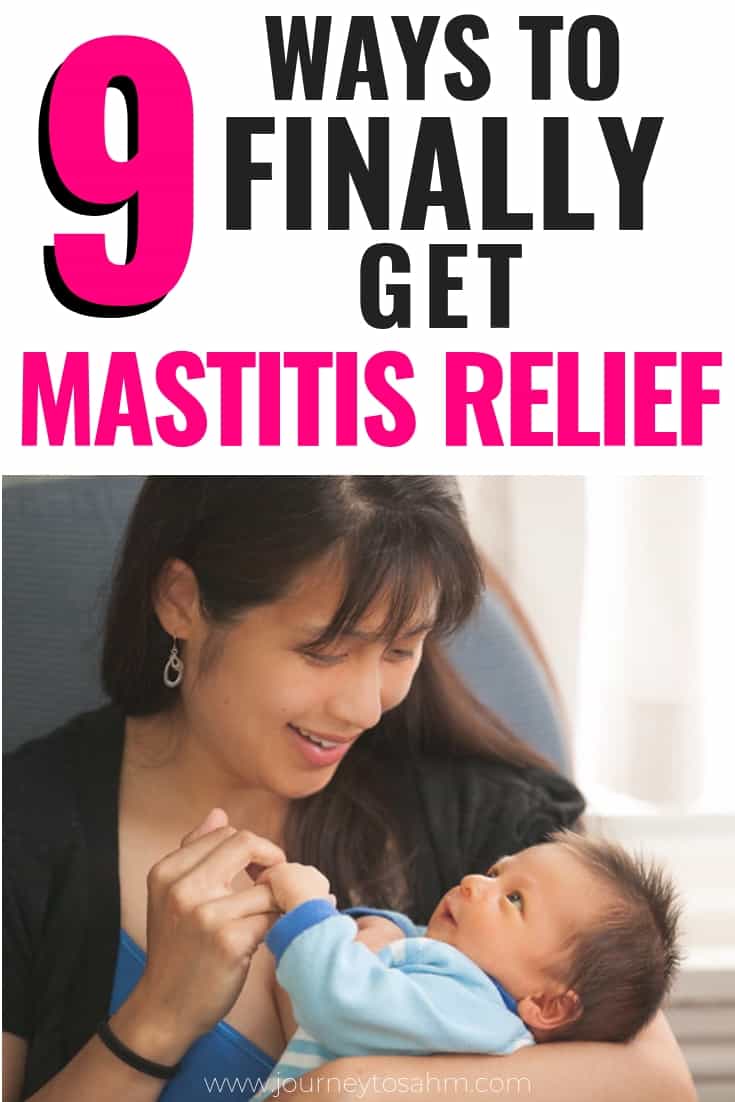This post may contain affiliate links. If you click on a link and make a purchase, I may receive a small commission at no extra cost to you. For more information, please read my disclaimer here.
Guest Blogger
If you’ve had mastitis, you know it’s terrible. It might hurt so bad you’re thinking about giving up breastfeeding. Thankfully, there is a way to find mastitis relief and even prevent it, so you can continue to breastfeed your little one.
Imagine one day, you are just walking down the street, with a coffee in one hand and a diaper bag in another.
Then all a sudden, a car comes out of nowhere and runs you over. Then, as you are struggling to get up, the car backs up and runs you over again.
That, my friends, is how you feel when you get mastitis. If you’re reading this and have mastitis, I’m sure you nodded your head. The pain really does feel that bad!
After getting recurrent mastitis FOUR TIMES while breastfeeding my son, I, unfortunately, know it very well.
However, I powered through each time and continued breastfeeding my son until he naturally weaned at two years old.
Thankfully, I didn’t get mastitis even once with my daughter (and she is still nursing at 3.5 years old!).
Here are tips on how you can survive mastitis while breastfeeding and how you can prevent it in the future.

What is Mastitis, and What Are the Symptoms?
What exactly is mastitis, and how does it cause so much misery?
Mastitis is an inflammation of the breast caused by clogged milk ducts or bacterial infection.
Mastitis Symptoms:
- A reddened area in one or both breasts and is hot to the touch
- Fever
- Nausea
- Pain while nursing
- Fatigue
- Hard lump in the breast
- Body ache
This is what I tell my friends:
You know when you have mastitis when you feel like you are getting the worst flu you have ever gotten in your life while getting punched repeatedly in the breast by Muhammad Ali.
Hence the nickname Boob Flu.

Mastitis, breastfeed, medical infographic. Diagnostics, symptoms, treatment. Women`s health icon set. Vector illustration
Related Articles:
The Best Tips for Taking a Baby to Disneyland
What to Do With a One-Month-Old Baby All Day Long
38 Super Fun Things to Do With a One-Year-Old
Tips for Mastitis Relief
1. Get Lots of Rest
Forget the house chores. Forget any errands you have run. Stay home and rest as much as possible!
2. Use Warm Compress
I used to throw a wet washcloth in the microwave and heat it for 30 seconds for my warm compress. You can also use a heating pad, but never use it during a nursing session.
Apply the warm compress before nursing to break up the clog and breastfeed immediately after to get the clog out.
3. Take Hot Showers
Similar to the warm compress, you can take a hot shower instead and let the hot water run over the affected area to break up the clog.
Taking a hot shower was very effective for me because I could massage the clogged milk duct while I shower.
4. Give Yourself a Mastitis Massage
Massage any lumpy areas in your breast gently to loosen the clog and improve milk drainage. Massage your breasts not only during hot showers or warm compress sessions but also while you nurse your baby.
While your baby feeds, press your thumb from behind the clog toward the nipple. Think of it as helping your baby suck out the clog.

5. Nurse as Much as Possible
Yes, breastfeeding while you have mastitis will hurt, and sometimes the pain is almost unbearable. However, you need to nurse through the pain because ultimately, unclogging the blocked milk duct is the key to curing mastitis.
If you nurse less due to the pain, then you might develop more clogged ducts and make the mastitis worse. Make sure your baby has a proper latch so he can help drain the milk ducts and remove the clog.
6. Try Different Nursing Positions
Many moms recommend the football hold when you have mastitis, but you can try different nursing positions to ensure that your breasts get adequately emptied. I used to nurse almost in a plank position, with my breast above my baby.
Nope, I am not getting a workout in while nursing. I am trying to use gravity to help my baby suck out the clogged duct. A similar concept applies for the football hold – your breast is more “vertical” while nursing in that position.
7. Treat Cracked Nipples
The other cause of mastitis besides clogged milk duct is a bacterial infection.
If you have a cracked nipple, bacteria can enter through the open wound. You can use coconut oil or nipple creams to treat cracked nipples.
I personally love this Motherlove Nipple Cream as it is lanolin-free and you don’t have to worry about wiping it off before breastfeeding.
8. Seek Help
You may be a super mom, but mastitis is your kryptonite. Don’t try and do it all while you are down and out.
Ask your friends and family to help with the baby and around the house while you have mastitis so that you can get all the rest you need to heal fast.
9. Contact a Medical Professional
I did not go to the doctor the first three times I got mastitis and healed using the tips I listed above.
The fourth time I got mastitis, I was pregnant with my daughter and was experiencing horrible morning sickness.
I couldn’t handle the mastitis symptoms along with throwing up all day, so I went to the doctor. My physician prescribed me an antibiotic, and the mastitis went away within a couple of days.
If you suspect you have mastitis, do mention it to your doctor. I have a friend who didn’t know about mastitis and went to her doctor, exhibiting all the symptoms.
The doctor, not knowing that she was a breastfeeding mom, told her that she might have a fatal illness (I know, can you believe it?) and put her through a whole bunch of tests, including ones for kidney and liver disease.
She ended up on antibiotics because the doctor could not figure out what was wrong with her, and she started to feel better.
She got home from the hospital and told me her story. I told her that it sounded like she had mastitis. She went back to her doctor and asked him about the possibility of mastitis, and her doctor confirmed that that was indeed what she experienced.
Amazing right? All because she didn’t mention to her doctor that she was breastfeeding!

How to Prevent Mastitis
You do not want to get mastitis. Ever. Never. And once you get it, you do not ever want to go through all that pain again.
Here are tips to prevent mastitis:
1. Wear Loose Clothes
Guess how I got mastitis four times? My bra was too tight!
Moreover, I was wearing my bra to sleep (I needed the pads to prevent leakage) and that’s why every time I got mastitis, I woke up with intense pain in my breast.
Tight bras can confine your breasts and cause clogged ducts. Make sure your bras are fitting correctly and take them off whenever you get a chance.
2. Manage Oversupply
If you are dealing with oversupply and you are not emptying your breasts, then the breast milk may get backed up in the milk ducts and eventually form a clog.
Nurse your baby, pump, or hand express to prevent breast engorgement and clogged milk ducts.
3. Ensure a Proper Latch
When your baby is latching correctly, he can efficiently remove breast milk from the milk ducts. Moreover, a proper latch prevents damage to your nipple and excruciating milk blisters.
Remember, pain is not normal when breastfeeding, and if your baby is not latching correctly and causing you pain, unlatch him, reposition, and relatch.
4. Change Breast Pads Often
If you are wearing breast pads, make sure you change them out often. Wet breast pads can become a breeding ground for bacteria.
I recommend using reusable breast pads to avoid the cost of constantly having to buy new disposable ones and honestly, they’re more comfortable.
5. Wean Your Baby Gradually
Wean your baby slowly to decrease your breast milk supply gradually, preventing breast engorgement that might lead to mastitis.
6. Don’t Forget Self-Care
Fatigue and stress can also lead to mastitis. Make sure you take care of yourself, eat healthy meals, drink enough water, and take time to relax and rest.
I know as a new mom it may be hard, but focusing on yourself will go a long ways.
Breastfeed Strong Mama!
Surviving mastitis is not easy, but come on, mama! You survived childbirth, which means you can handle anything that comes your way.
Don’t let mastitis cause you to stop your breastfeeding journey. I hope these tips will help you overcome mastitis and prevent it from ever happening again!
But if you do decide to stop breastfeeding, know that YOU are the only person who can decide what’s best for your baby. It is completely okay not to breastfeed, especially when it’s jeopardizing your mental or emotional health.
About Guest Blogger Betty

Betty is a mother of two who strives to inspire other moms to embrace motherhood as the hot mess it is.
When she is not busy chasing after her kids or digging herself out of piles of laundry, you can find her writing on her blog Mombrite and pinning parenting tips and fun kids activities on Pinterest.



Jennifer
Sunday 3rd of April 2022
Thank you so much for this! I found it helpful while also making me laugh a little which was very much needed since I’m breastfeeding baby number 5 who is also premature. Thank you for your tips. I will be trying all of them!